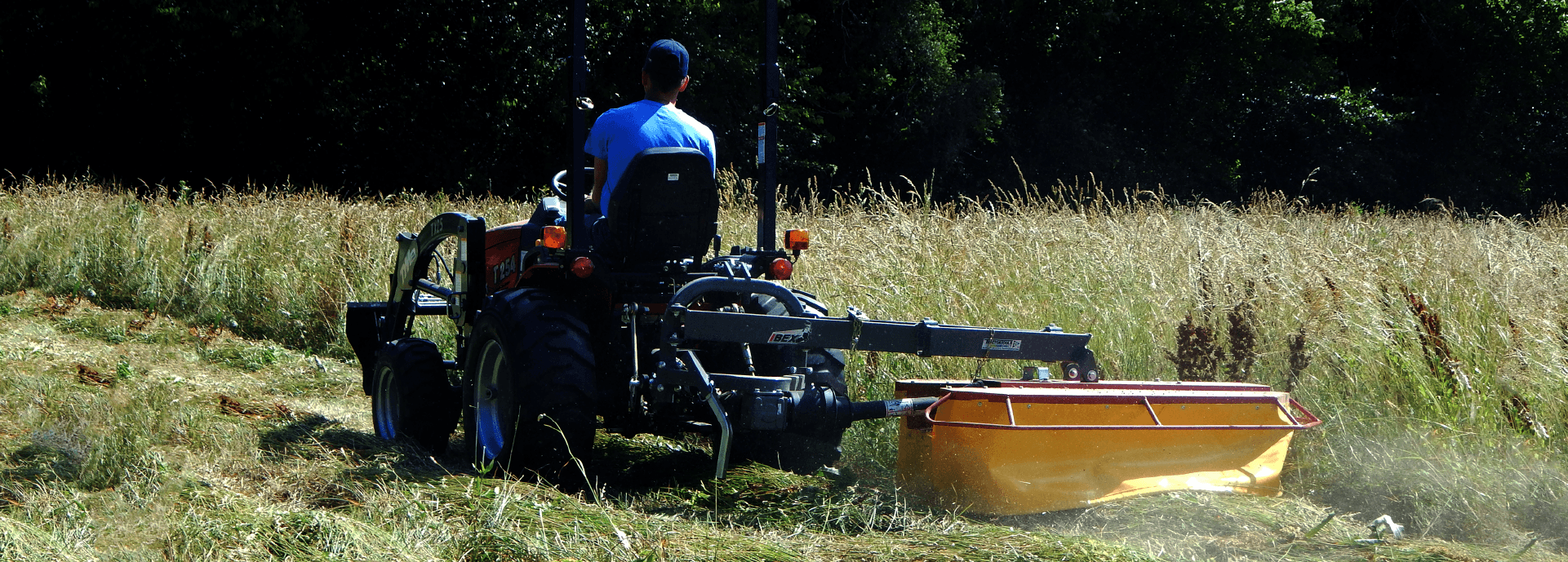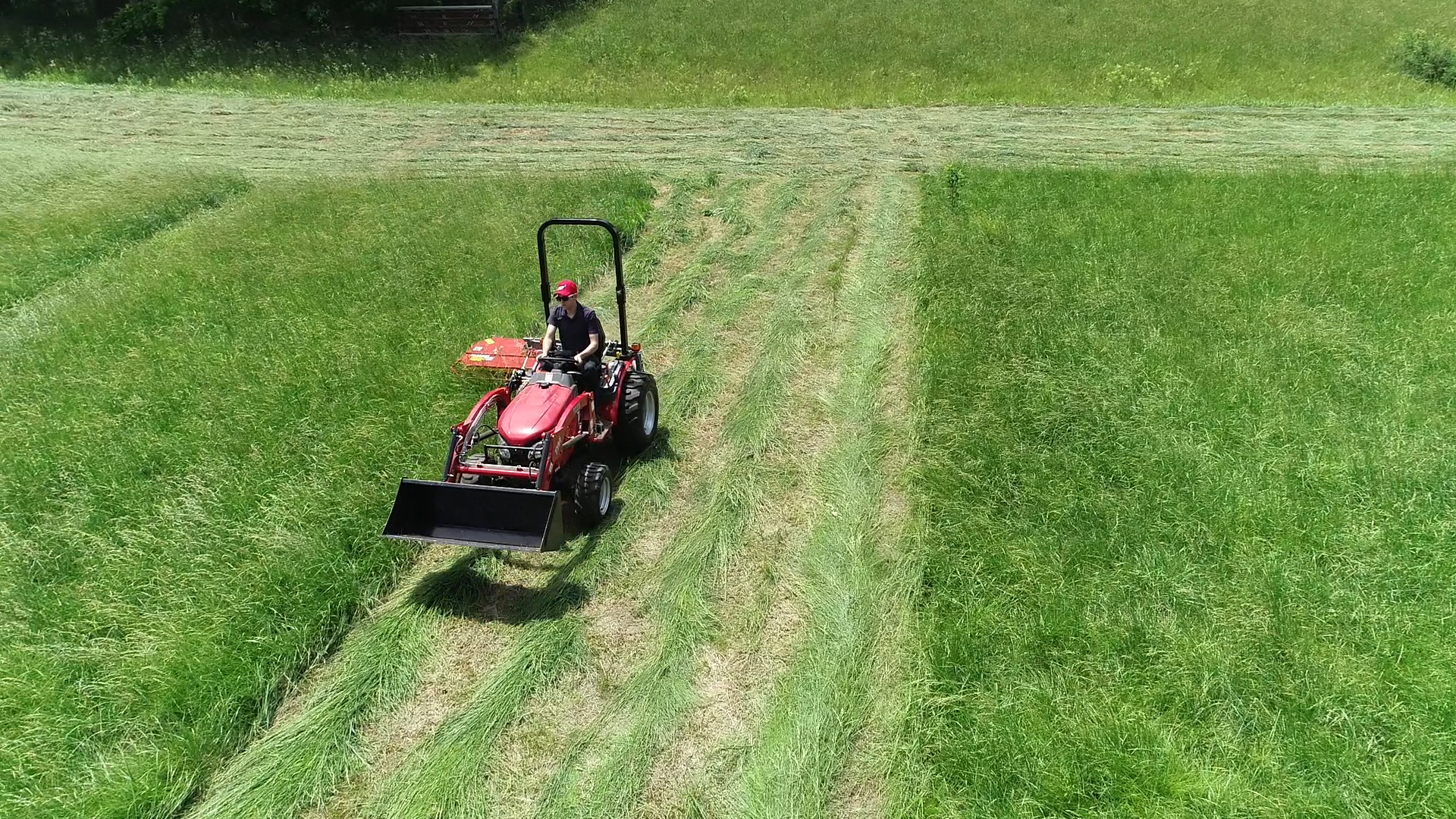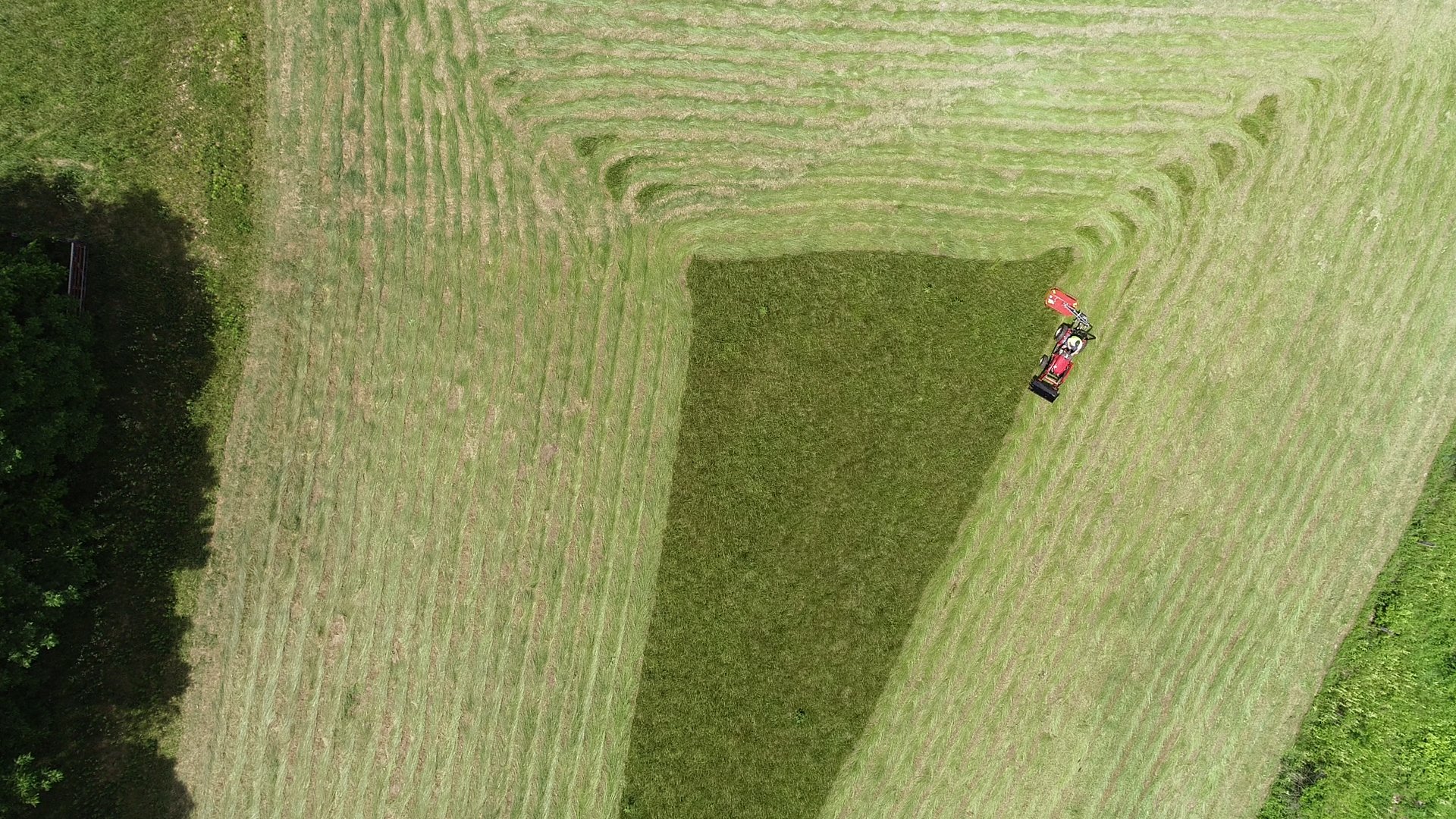Be Ready for Hay Season With These Mowing Tips!

Now that spring has sprung, it is time to start thinking about that first cutting of hay. Once your pastures have reached the optimum level of maturity, you will want to be ready to mow at the first sign of perfect weather. Here are a few tips to ensure that you and your mower are ready to go.
Preparing Your Mower
One of the most important steps you can take, even before hitting the hay field, is to make sure your mower is fitted with sharp blades. Sharp blades ensure a clean cut and reduce stem and leaf damage. Damaged plant stems take longer to regrow and can be more susceptible to disease and drought. In addition, cutting with sharp blades will greatly reduce horsepower requirements. You may even notice at the end of a long day of cutting that your tractor seems to be working harder than it was earlier in the day. This is likely due to your blades dulling over the course of the day. For this reason, be sure to keep blades in stock and change them out at the intervals recommended in your mower’s owner’s manual.
Some blades can be resharpened. Just keep in mind on rotary cutters that it is very important to keep the blades balanced on each disc or drum when you swap them in and out. Failure to do so will result in excessive vibration and additional machine wear. Most disc and drum mower blades are inexpensive, so it may not be worth the trouble to try to sharpen them when they dull. Sickle bar blades can be sharpened, provided you have the right tools. But again, it is wise to have an extra cutterbar on hand that can be swapped in when you don’t have time to resharpen.
The next task is to ensure that your mower is set to the correct cutting height. This height will depend upon the forage you are cutting. As a rule, legumes like alfalfa can be cut closer to the ground than grasses. This is because a legume’s energy reserves are located underground in the root while grasses store their energy at the base of the stem. Cutting grasses too short can overly deplete these reserves causing them to take longer to rejuvenate and cause longevity issues in the stand. That being said, under normal conditions most mowers are designed “out of the box” to cut at the correct height.
If a higher cut is necessary, you may be able to buy spacers or skids for the underside of your mower to increase the cutting height. For disc and sickle bar mowers, cutting height can also be adjusted some by tilting the mower backward or forward by lengthening or shortening the tractor’s top link. Drum mowers, on the other hand, should generally be set up with the bottoms of the drums parallel to the ground or tipped slightly back. Remember, whatever type of mower you have, it is designed to slide along the ground, following the ground contours to ensure an even cut.
How to Mow

Knowing what pattern to use while cutting your hay can make the job quicker and minimize uncut hay--the result of being mashed down by the tractor tires. All three-point-hitch mowers are made to stick out to the right of the mower. In general, that means you want the uncut hayfield to your right and the already cut hay under your tractor and to your left. However, this may not always be possible, especially with fields that are bordered by fences.
A good general procedure is to start mowing in a counterclockwise direction around the edge of the field. Although you will have to drive over uncut hay, this allows you to get as close as possible to the edge of the field. Two laps will generally give you enough clearance to be able to maneuver on subsequent laps.
Once you’ve done that, there are two primary strategies. The first is to simply turn around and do the rest of the field in a clockwise direction, driving in the previous row of cut hay, until you get to the middle. For many fields this is the easiest method. You will find, however, that corners become increasingly elongated, and you will spend more and more time turning and doubling back to cut everything as you get closer to the middle of the field. Also, if the field is irregular in shape, you will have a tougher time following the cut edge to maximize cutting width.

The other method is to choose the longest straight stretch across the middle of the field, and simply go back and forth, returning in the previously cut row. Although you have to make a complete 180 degree turn at each end, overall you’ll be more efficient while you are cutting, and it will be easier to use the full width of your cutter.
With some mowers, and particularly sickle bar mowers, it’s important to pick up the cutterbar whenever you are going over an area that has already been cut. Failing to do this can result in jamming of the cutterbar. With drum mowers, the drums are simply left on the ground, and will slide under the cut hay. Some disc mower operators prefer to pick up the cutterbar when going through cut hay, since it’s easy to do from the tractor seat, but it’s not necessary.
All of these tips should allow you to have a successful mowing experience. However, the last tip is to enjoy your time mowing. The smell of freshly mown hay and the mesmerizing patterns created by the mower can serve as a tonic to the sometimes demanding pace of farming. Allow yourself to take it in.
To learn more about our line of mowers for subcompact and compact tractors, please visit our website at https://tractortoolsdirect.com/hay-mowers/, or give us a call at 1-260-BALE-HAY today!
Sources
https://blog.agcocorp.com/2013/03/hay-cutting-tips-for-superior-hay-quality/
https://extension.psu.edu/cutting-height-in-hay-fields-how-low-can-you-go
https://www.ehow.com/how_2331131_mow-hay-field.html
https://www.makinhay.com/the-lowdown-on-mowing-hay/
http://www.sheepscreek.com/rural/haying.html
Recent Posts
-
Haying Independence
In this month’s blog, let’s take a deeper look at the foundation of what we here at Tractor To …Apr 1st 2024 -
Be On the Cutting Edge of Modern Market Gardening Using Raised Bed Systems: FULL-TILL, MINIMUM-TILL, and NO-TILL
Market gardening is the production of vegetables, fruits, flowers and other plants on a scale larger …Mar 1st 2024 -
No Loader? No Problem.
So you have a compact tractor on your small farm, but you don’t have a front loader. Maybe price put …Feb 1st 2024




